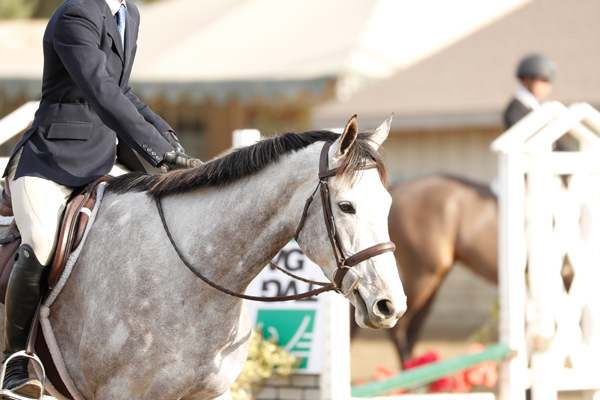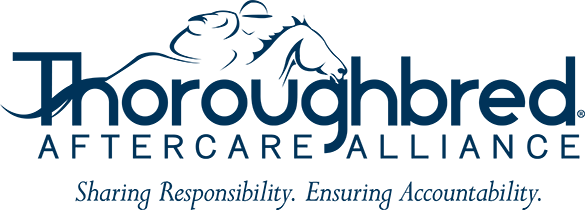Successful Thoroughbred aftercare organizations run like well-oiled machines. Wanting to help horses is one thing, but having the industry knowledge and business acumen to effectively place racehorses safely into new homes while being efficient with funding is quite another.
The California Retirement Management Account placement program is doing just that, and doing it well. Building in steady increments since 2008 has allowed the organization to get where it is now, with approximately 20-30 horses going through its placement program at any one time.
But that’s only part of what CARMA does. The organization is also a granting body that provides funding to organizations that retire, retrain, and rehome Thoroughbreds that have raced in California.
Erin Shea spoke with CARMA representatives—founder Madeline Auerbach, executive director Lucinda Mandella, and project manager Natalie Rietkerk—about the organization’s placement program and its progress.
Erin Shea: So a horse is in training at a California racetrack and needs to be retired. What does CARMA do?
Natalie Rietkerk: Typically what happens is the trainer is the one who calls us and lets us know they have a horse that’s retiring. The trainer is usually the one who gets the ball rolling. If they are at Santa Anita, I’ll go to the backside and talk to the trainer and take a look at the horse, and make a decision on which of our layup facilities the horse needs to go to. Typically after that I talk to the owner who will make the donation and sign over custody of the horse to the CARMA placement program.
Lucinda Mandella: We work with aftercare organizations that are (Thoroughbred Aftercare Alliance) accredited, and we work with additional organizations too. The organizations that are getting horses from the placement program are organizations that have received a CARMA grant. That’s the qualification that we use in terms of the organizations that we place horses with. We additionally place horses directly—we network with other show trainers and equestrians. We work to find the best place for the horse, whether it’s an aftercare organization that’s doing retraining and adoption or permanent retirement, or an individual, or therapy program.
ES: Why do you like to work with organizations that are TAA accredited?
Madeline Auerbach: That’s pretty obvious. The TAA does all of the work in terms of identifying the best places for our money to be spent, and the entirety of the accreditation process is valuable to us.
ES: Why do you think a triage program like CARMA is successful?
MA: It’s successful because we’ve grown it in a very orderly, very concise, very professional way. We have done it all within the realm of knowing what we were doing, with the placement program at the core. Both Lucinda and Natalie are horsewomen who know what they are doing. We have one of the preeminent vets in Dr. Jeff Blea—we have people who know what they are doing, know what they are looking at, and understand what a horse needs.
With the CARMA placement program, we were really the first organization to start this way of handling it. When we first started CARMA, we called in all of the people who were looking for funding—all of the aftercare groups—and we had a round table, and we asked them what their biggest problem was in taking retired Thoroughbreds. Hands down, they needed help with the bills when they first received horses from the track. They needed a triage situation before they would take a horse so that they knew what they were getting.
Plus the placement program has the benefit of CARMA’s funding structure. We get a small percentage of the purses—0.3%, very small—and years ago Santa Anita said they would match that money. We stockpiled that money until we figured out how to use it, and the CARMA placement program is how we use those funds. So it’s the perfect relationship between the track and the owners of how to fund aftercare for these horses. It’s really a marvelous program.
ES: What advice would you give to those who want to start a triage program in their area?
LM: I think that any organization that is starting, whether it’s an adoption organization or one that’s a permanent sanctuary, I think the most important thing is continuous funding. Even though it’s charitable in nature, it’s still a business. The placement program is a substantial program, it has a substantial budget. What is important is that we have income for the program. I think the first thing any of us would say is that you need to have a strategic plan in place to generate income, and that may look very different in the region that you’re in and the track or racing association that you’re affiliated with.
NR: If I was going to give someone a piece of advice on running a program like this, it is very, very important that you have solid relationships with the people who are taking care of these horses daily, with the veterinarians, and with the people who adopted these horses. I can’t stress enough of how much communication goes on just managing these horses. It’s fully a team effort.
ES: How substantial of a program is CARMA placement program? What does it cost to make this run?
LM: Our placement program for the first three months of 2018 had operational expenses of approximately $53,000. Total expenses, which includes management expenses and things like that, is more than $60,000. That’s for three months worth of operations. In January, February, and March, we averaged 25-30 horses per month (at layup facilities), with expenses of approximately $20,000 a month across the state. We have six locations—layup facilities and rehab facilities. So across the state we’re looking at 25-ish horses per month with $20,000 worth of expenses. It is a substantial program. I can tell you that it takes a fair amount of money to take care of that many horses. A 20-30 horse barn is bigger than some trainers that we work with. Our budget for 2018 for this program is just over $215,000.
ES: How many horses have you placed since the program started?
NR: 208. I’ve been with CARMA a little over two years now. When I started I was told that I would manage 10 horses (at layup facilities), and now we’re consistently around 25. Just the momentum of the horses getting placed, and I think they’re becoming more impressive (in second careers), we have a couple hopefully going to be police horses, we have a horse that graduated two years ago that’s jumping four feet and is a grand prix prospect. They’re doing so many incredible things.
MA: It took us a year to get confident and comfortable to have any kind of string going with these horses. There are so many things that you can do wrong. For example, we don’t have horses going out and coming back. We like to put the money and to spend the money at the beginning of the program to make sure the horses are healthy and are going into a situation that is tailored for that particular horse. So after a couple of hundred horses working through the program, we are now picking up momentum and we are now placing 8-10 horses a month (into aftercare organizations, sanctuaries, and other homes).
ES: What’s one thing you wish more people knew about Thoroughbred aftercare?
MA: I would like people to know that there are very, very dedicated people who really do take care and love these horses. Thoroughbreds in particular, in my view, are the elite in the horse world. You can train them to do anything. They respond to love, they respond to care, they’ll never forget you. I am encouraged by people who have come around and are now taking it seriously. If I had one wish it would be that everybody in racing understood that aftercare is not a charity, it’s a responsibility. If I had one wish, that would be my wish. That the industry would recognize aftercare as a responsibility to the horses, and if we had a way to mandate that everybody put in a little bit, we can save all of these horses.
Photo: CARMA graduate Branjamma’s Trio shows at the Thoroughbred Classic Horse Show, courtesy of Kristin Lee Photography














